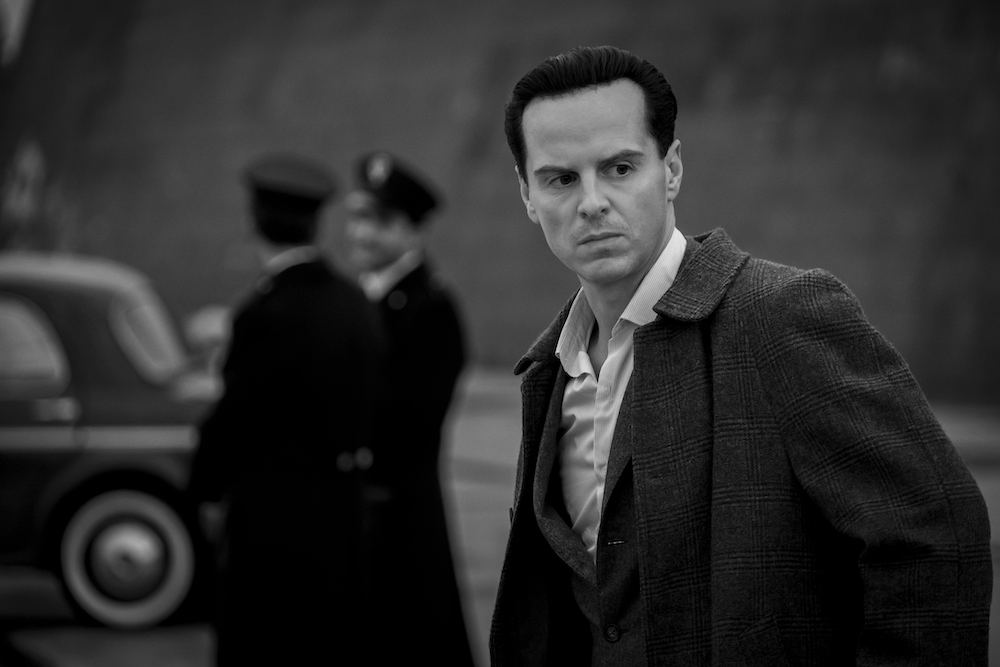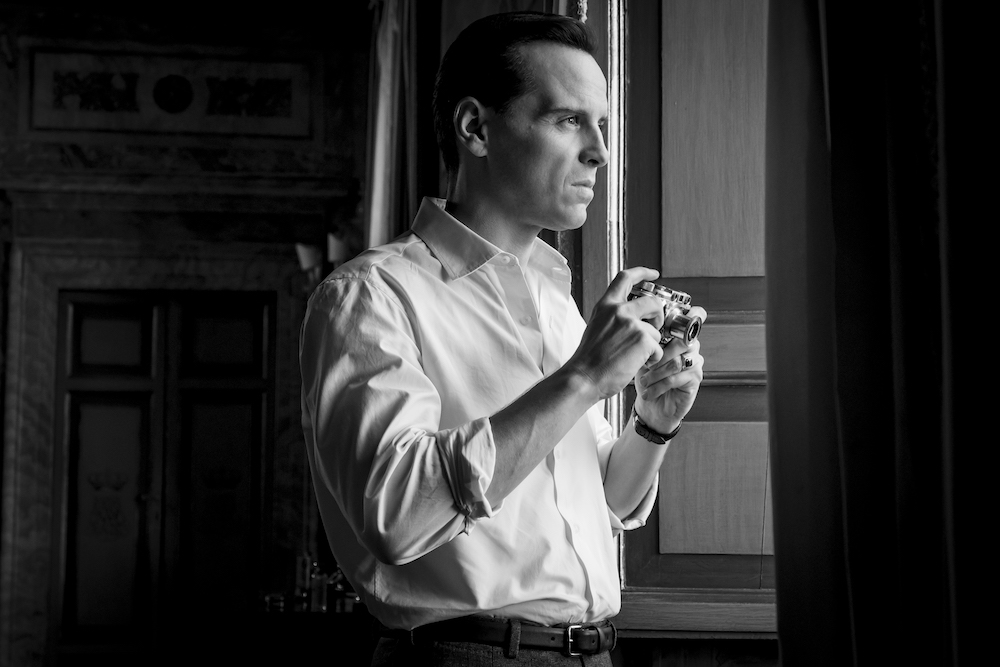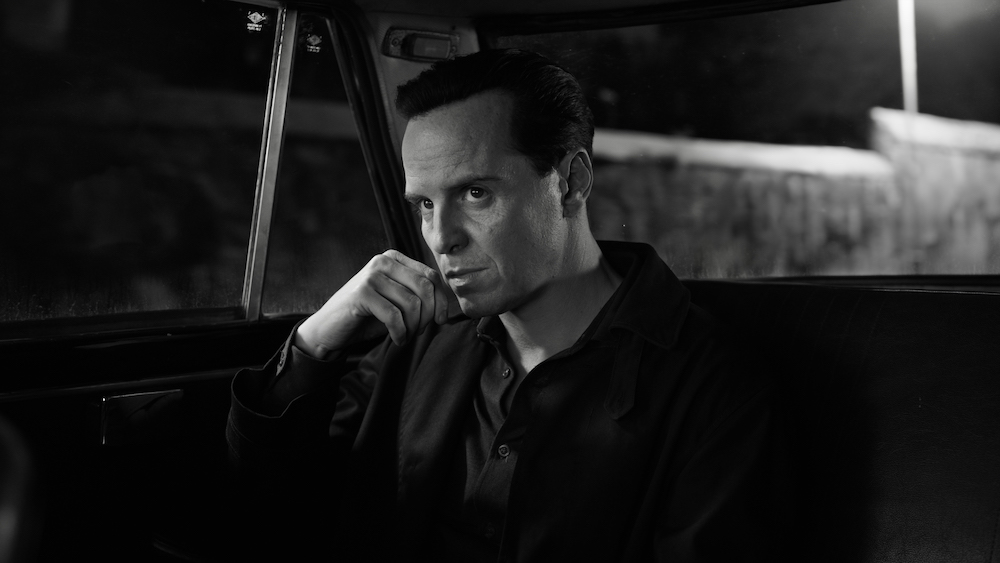Andrew Scott dons the titular role in Netflix’s ‘Ripley,’ bringing to screen the dangerous Tom Ripley, whose story takes one dramatic turn after another. He is sought out by a rich man called Herbert Greenleaf, who believes that Ripley is one of the friends of his son, Dickie. He wants Ripley to go to Italy and convince Dickie to come back home. Having the opportunity to leave his miserable life in New York, Ripley jumps at the offer, but once he arrives in Italy and meets Dickie, he becomes obsessed with having the same life.
Ripley’s desire leads him down a dark path, causing bloodshed and a lot of heartache for anyone who crosses paths with him. His actions are unbelievable yet fascinating, enough to make one think about his real-life counterparts. Who cooked up such a twisted character, and what inspired them to do it?
Tom Ripley Stemmed From the Author’s Own Life and Personality

‘Ripley’ brings to screen Patricia Highsmith’s critically acclaimed novel, ‘The Talented Mr. Ripley.’ The story is entirely fictional, with all the characters and the circumstances surrounding their lives and deaths being concocted by the author. Classics like Julian Green’s ‘If I Were You’ and Henry James’ ‘The Ambassadors’ (which is also referenced in Highsmith’s novel) are considered the literary inspirations behind Ripley. There is no direct connection that one can form between Highsmith’s protagonist and a real-life con artist. However, there are certain things from her own personality, here and there events from her life, and some random things that she duct-taped together to create the fascinating Tom Ripley.
Originally published in November 1955, the premise of the novel is said to have been informed by a news story that Highsmith once mentioned she read in Herald Tribune. It was about a man who was arrested at his own funeral after having been presumed dead when his charred body was discovered by the police. It seemed an interesting thing to include in the story, but the main plot revolved around Ripley and his fascination with Dickie Greenleaf, with the former becoming obsessed to the point of jealousy and, eventually, murder.
Once again, there are no direct claims to it, but it is noted by some that the relationship between the men may have stemmed from Highsmith’s relationship with Kathryn Hamill Cohen, a married woman with whom the author had an affair. They had known each other for a while before Highsmith, on her trip across Europe, invited Kathryn to join her in Italy. They spent three weeks together in the country, moving from Rome to Positano to Palermo and Capri. They were involved with each other, something they kept secret not just because Kathryn was married but also because homosexuality wasn’t as acceptable to society at that time.
When their journey came to an end, the women parted ways and never spoke of the affair again. Kathryn went back to her married life. However, for Highsmith, the relationship still lingered in her mind. A few years later, she returned to Positano, which served as the fictional Mongibello (switched for Atrani in the Netflix series) in the first installment of the Ripley novels. It is on her second visit that Highsmith is said to have observed something that subconsciously stuck to her and eventually served as the seed for Ripley’s character.

She revealed that one day, from the balcony of her hotel in Positano, she noticed “a solitary young man in shorts and sandals with a towel flung over his shoulder.” The author noted that he had an air about him that made her notice him and wonder why he was alone and what was going on with him. She never crossed paths with the man nor saw him again, but this image of just another American man stayed in her mind, and months later, she had the premise of ‘The Talented Mr. Ripley.’
While the image of the strange man on the beach may have been the flicker, the true essence of Ripley was mined from Highsmith’s own thoughts and murderous fantasies, something she could only execute in fiction. (The author revealed once to have had the desire to kill her lovers, calling murder “a kind of making love” and describing love as being “shot in the face.”) The author also confessed to having related to the character of Ripley more than any other of her fictional protagonists.
She reflected in him her own social awkwardness and her desire to disappear into something else. The audience may also connect Ripley’s confused sense of sexuality to the author, who spent some time with psychiatrists trying to fix herself, like many other members of the LGBT+ community at the time. Eventually, however, she came to accept and flourish in her sexuality. The connection Highsmith felt with Ripley was so strong that at one point, she would sign off herself as “Tom” or “Ripley.” Considering all this, one can say that Patricia Highsmith imbued some of her own essence in Tom Ripley, which is why, perhaps, he feels so real to the audience, even though he is a completely fictional character.
Read More: Movies You Must Watch if You Like The Talented Mr. Ripley


You must be logged in to post a comment.